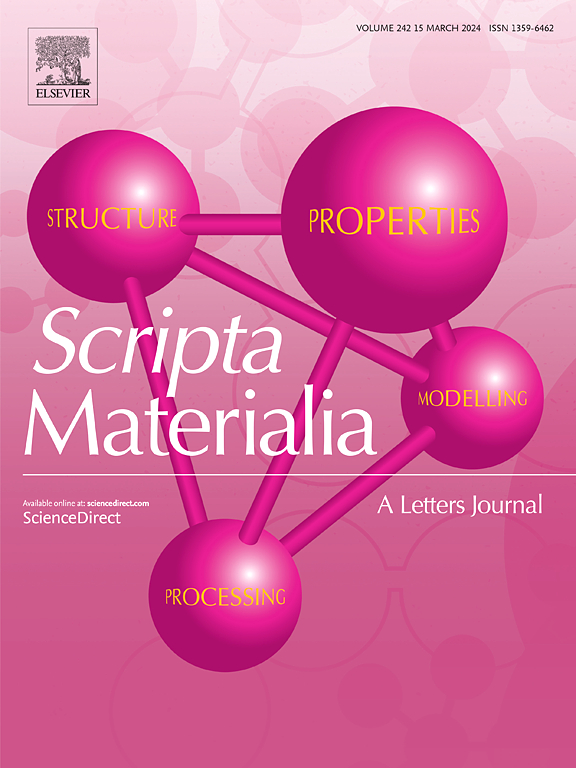高压扭转纳米化对高熵合金超导性的影响
IF 5.3
2区 材料科学
Q2 MATERIALS SCIENCE, MULTIDISCIPLINARY
引用次数: 0
摘要
高熵合金(HEAs)已成为包括超导体在内的不同应用领域的有利选择。本文研究了高压扭转(HPT)纳米结构对等原子TiZrHfNbTa HEA超导性能的影响。结构表征显示晶粒尺寸逐渐细化,位错密度增加,HPT加工过程中部分相变为ω相。磁化率和磁化强度的测量表明,HPT处理使超导转变温度(从Tc = 6.2 K到7.2 K)和临界磁场有了系统的提高,超导态也得到了稳定。超导性能的提高主要归因于晶界密度、缺陷生成和相变等微观结构的改变,以及它们对涡旋钉钉、量子约束和电子散射的影响。结果表明,通过严重塑性变形的纳米结构为优化高熵超导体的超导性能提供了一条合适的途径。本文章由计算机程序翻译,如有差异,请以英文原文为准。
Influence of nanostructuring through high-pressure torsion (HPT) on superconductivity of a high-entropy alloy
High-entropy alloys (HEAs) have emerged as favorable choices for different applications, including superconductors. The present work examines the impact of nanostructuring via high-pressure torsion (HPT) on the superconducting properties of the equiatomic TiZrHfNbTa HEA. Structural characterization reveals a progressive refinement of grain size and increased dislocation density, together with partial phase transformation to an ω phase with HPT processing. Magnetic susceptibility and magnetization measurements indicate a systematic enhancement in the superconducting transition temperature (from Tc = 6.2 K to 7.2 K) and critical magnetic field, as well as the stabilization of the superconductivity state by HPT processing. The improvement of superconducting properties is attributed to microstructural modifications such as grain boundary density, defect generation and phase transformations, and their impact on vortex pinning, quantum confinement and electron scattering. The results suggest that nanostructuring through severe plastic deformation provides an appropriate route to optimize superconducting properties in high-entropy superconductors.
求助全文
通过发布文献求助,成功后即可免费获取论文全文。
去求助
来源期刊

Scripta Materialia
工程技术-材料科学:综合
CiteScore
11.40
自引率
5.00%
发文量
581
审稿时长
34 days
期刊介绍:
Scripta Materialia is a LETTERS journal of Acta Materialia, providing a forum for the rapid publication of short communications on the relationship between the structure and the properties of inorganic materials. The emphasis is on originality rather than incremental research. Short reports on the development of materials with novel or substantially improved properties are also welcomed. Emphasis is on either the functional or mechanical behavior of metals, ceramics and semiconductors at all length scales.
 求助内容:
求助内容: 应助结果提醒方式:
应助结果提醒方式:


